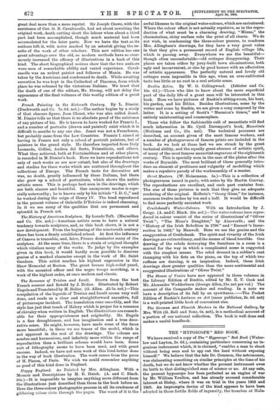original work, death cutting short the labour when about a
third part had been accomplished, though much material had been accumulated for the later parts. Now we have the text as its authors left it, with notes marked by an asterisk giving the re- sults of the work of other scholars. This new edition has one great advantage over the old, as modern methods have so enor- mously increased the efficacy of illustrations in a book of this kind. The short biographical notices show that the two authors were men of remarkable ability and varied experience. Caval- caselle was an ardent patriot and follower of Mania. He was taken by the Austrians and condemned to death. While awaiting execution he was kept in the Cathedral of Piacenza, from which place he was released by the victorious Italians. We trust that the death of one of the editors, Mr. Strong, will not delay the appearance of the final volumes of this worthy edition of a great work.
French Painting in the Sixteenth Century. By L. limier. (Duckworth and Co. 7s. 6d. net.)—The author begins by a study of that obscure figure, Jean Clouet, who was also called Janet.
H. Dimier tells us that there is no absolute proof of the existence of any picture of his. He is known to have worked for Francis I., duction of what must be a charming drawing, "Minna," the characterless, shiny surface robs the print of all charm. We do not wish, in condemning the three-colour process, to condemn Mrs. Allingham's drawings, for they have a very great value
in that they give a permanent record of English village life, which is passing away. Everywhere we see the beautiful—
though often uncomfortable—old cottages disappearing. Their places are taken either by jerry-built town abominations, both ugly and inconvenient, or else by good houses with an affectation of artistic appearance. The perfectly natural and lovely old cottages seem impossible in this age, when an over-cultivated taste has little or no root in a real artistic sense.
Ruskin Relics. By W. G. Collingwood. (Isbiater and Co. 10s. 6d.)—Those who like to know about the more superficial part of the daily life of a great man will be interested in this book. Here we have pictures of Ruskin's sitting-room, his boat, his garden, and his Bibles. Besides illustrations, some by the writer and some by Ruskin, wears given a song composed by the latter. It is a setting of Scott's " Marmion's Grave," and is entirely uninteresting; and commonplace.























































 Previous page
Previous page